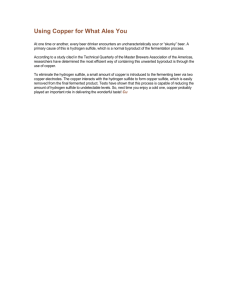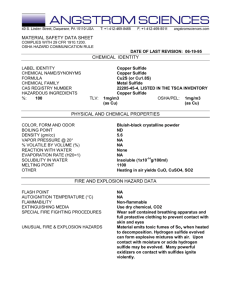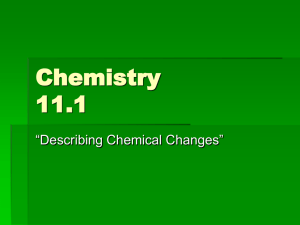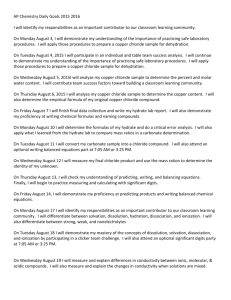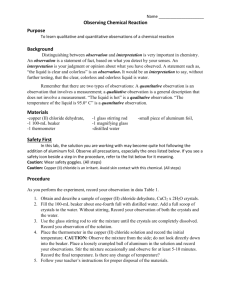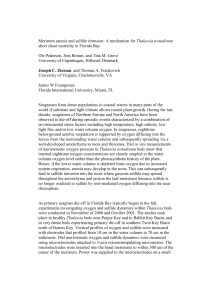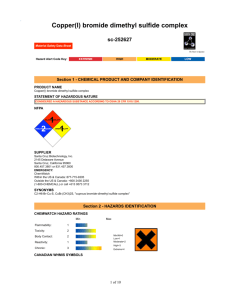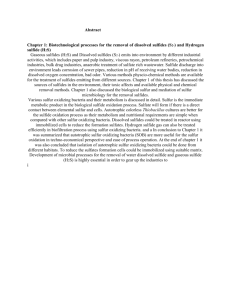materials
advertisement
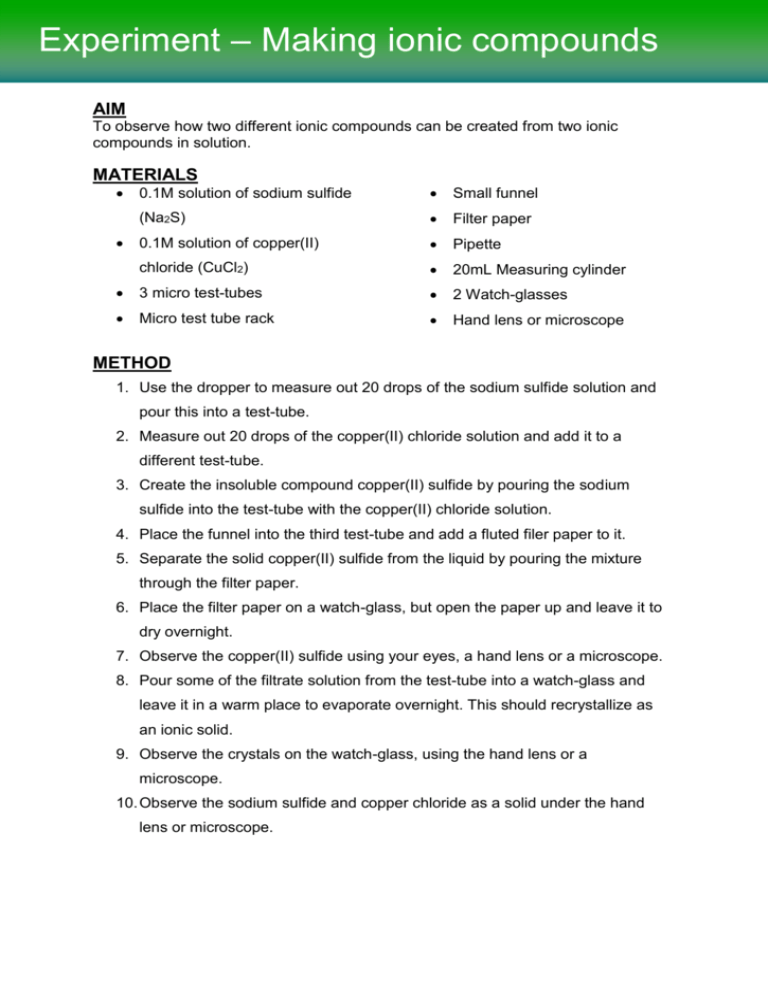
Experiment – Making ionic compounds AIM To observe how two different ionic compounds can be created from two ionic compounds in solution. MATERIALS 0.1M solution of sodium sulfide Small funnel (Na2S) Filter paper 0.1M solution of copper(II) Pipette chloride (CuCl2) 20mL Measuring cylinder 3 micro test-tubes 2 Watch-glasses Micro test tube rack Hand lens or microscope METHOD 1. Use the dropper to measure out 20 drops of the sodium sulfide solution and pour this into a test-tube. 2. Measure out 20 drops of the copper(II) chloride solution and add it to a different test-tube. 3. Create the insoluble compound copper(II) sulfide by pouring the sodium sulfide into the test-tube with the copper(II) chloride solution. 4. Place the funnel into the third test-tube and add a fluted filer paper to it. 5. Separate the solid copper(II) sulfide from the liquid by pouring the mixture through the filter paper. 6. Place the filter paper on a watch-glass, but open the paper up and leave it to dry overnight. 7. Observe the copper(II) sulfide using your eyes, a hand lens or a microscope. 8. Pour some of the filtrate solution from the test-tube into a watch-glass and leave it in a warm place to evaporate overnight. This should recrystallize as an ionic solid. 9. Observe the crystals on the watch-glass, using the hand lens or a microscope. 10. Observe the sodium sulfide and copper chloride as a solid under the hand lens or microscope. RESULTS Observations 0.1M solution of sodium sulfide 0.1M solution of copper(II) chloride Mixture of the two solutions Solid copper(II) sulfide after filtration Remaining solution after filtration Copper(II) sulfide after drying Recrystallised ionic compound Sodium sulfide as a powder Copper chloride as a powder Picture of material DISCUSSION 1. List all the cations and anions involved in this experiment. 2. a. Describe what happened when the two initial solutions were mixed. b. Explain why this happened. 3. Deduce which ions went into making the solid in the filter paper and then write its chemical formula. 4. Deduce which ions must have been left in solution after the solutions were mixed. 5. Predict the chemical name and chemical formula of the recrystallised solid. 6. Propose whether the re-crystallised compound is pure or not. Use your observations to support your answer. CONCLUSION
